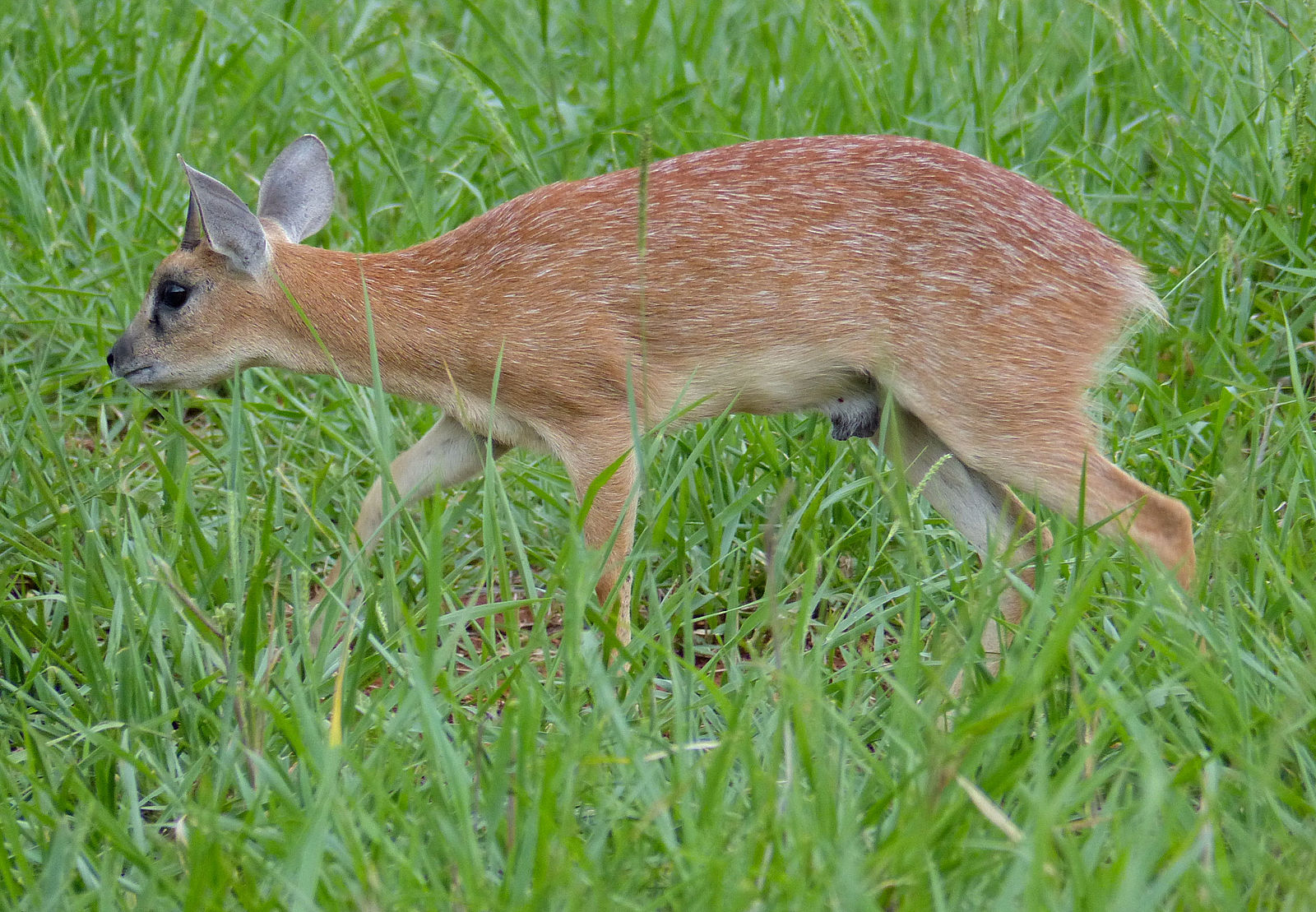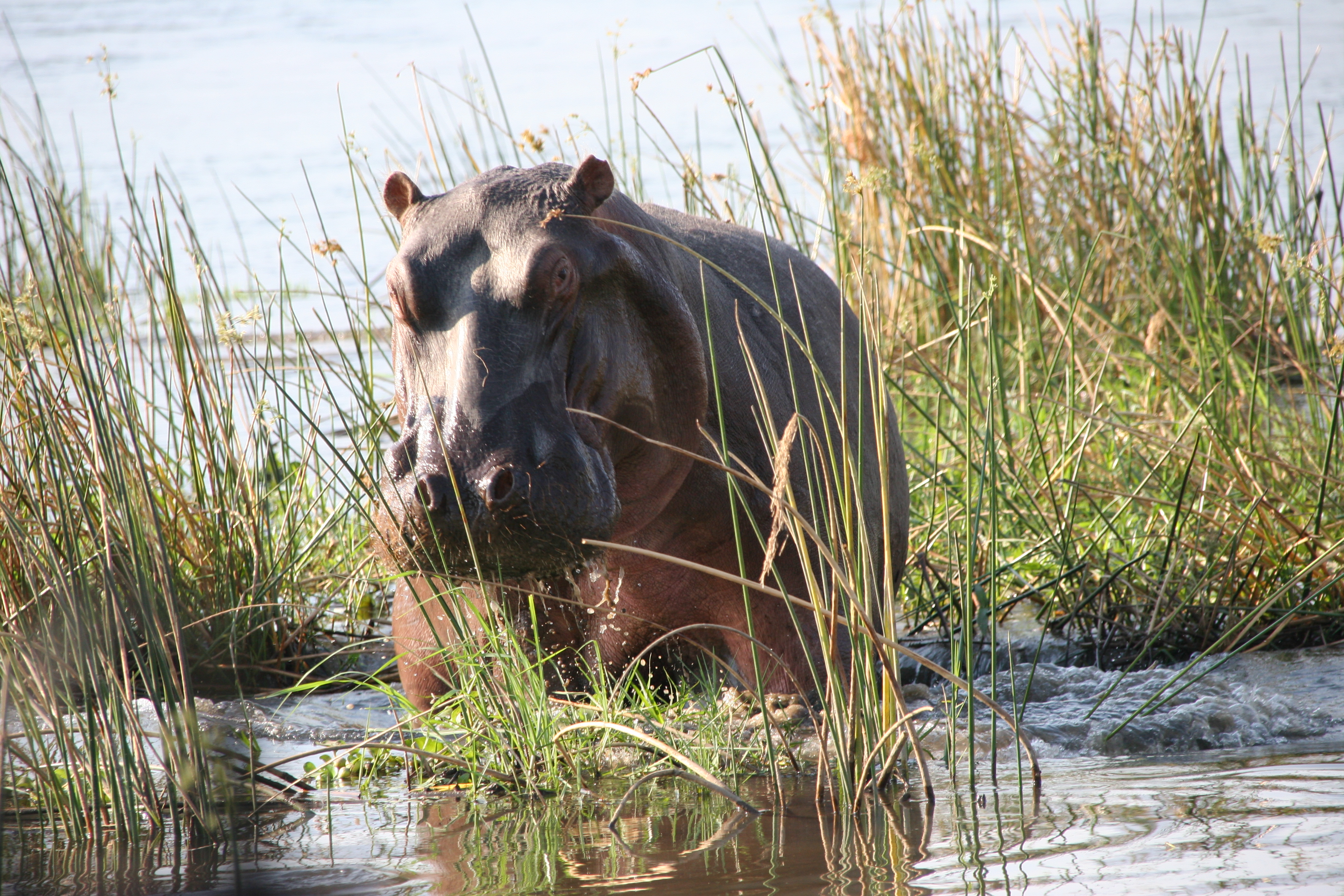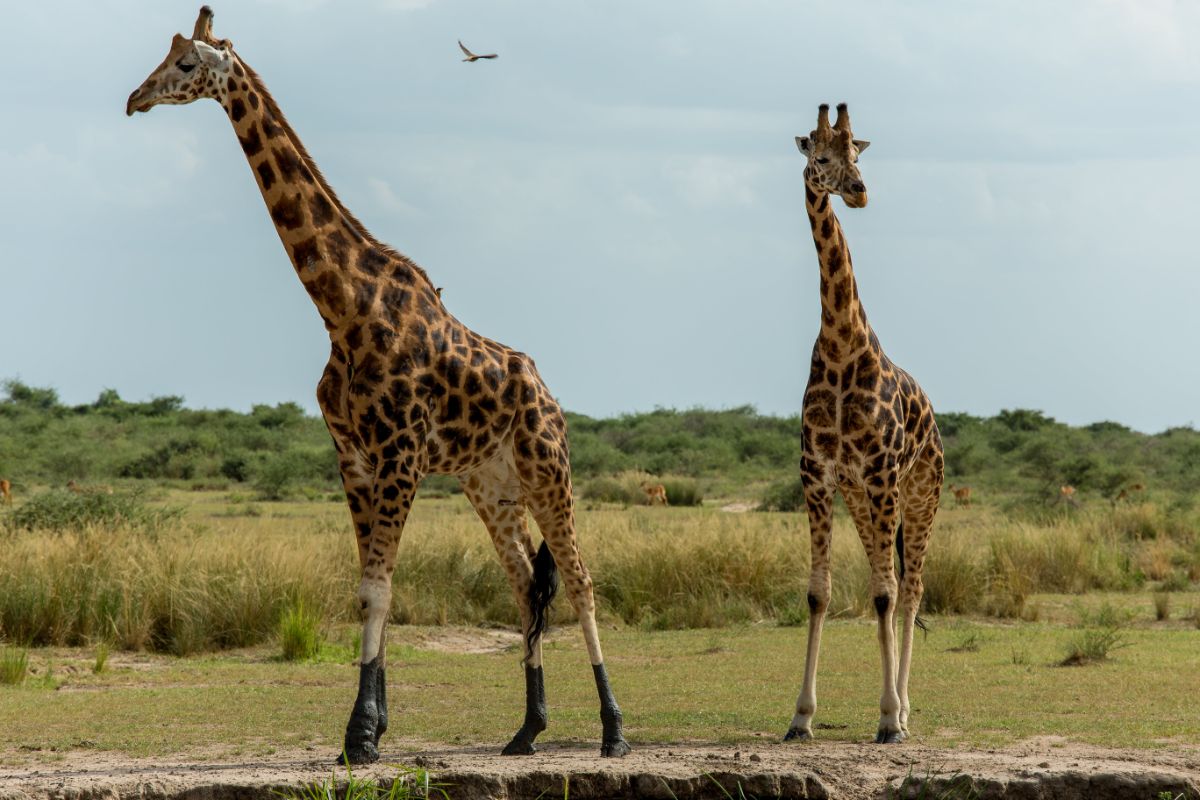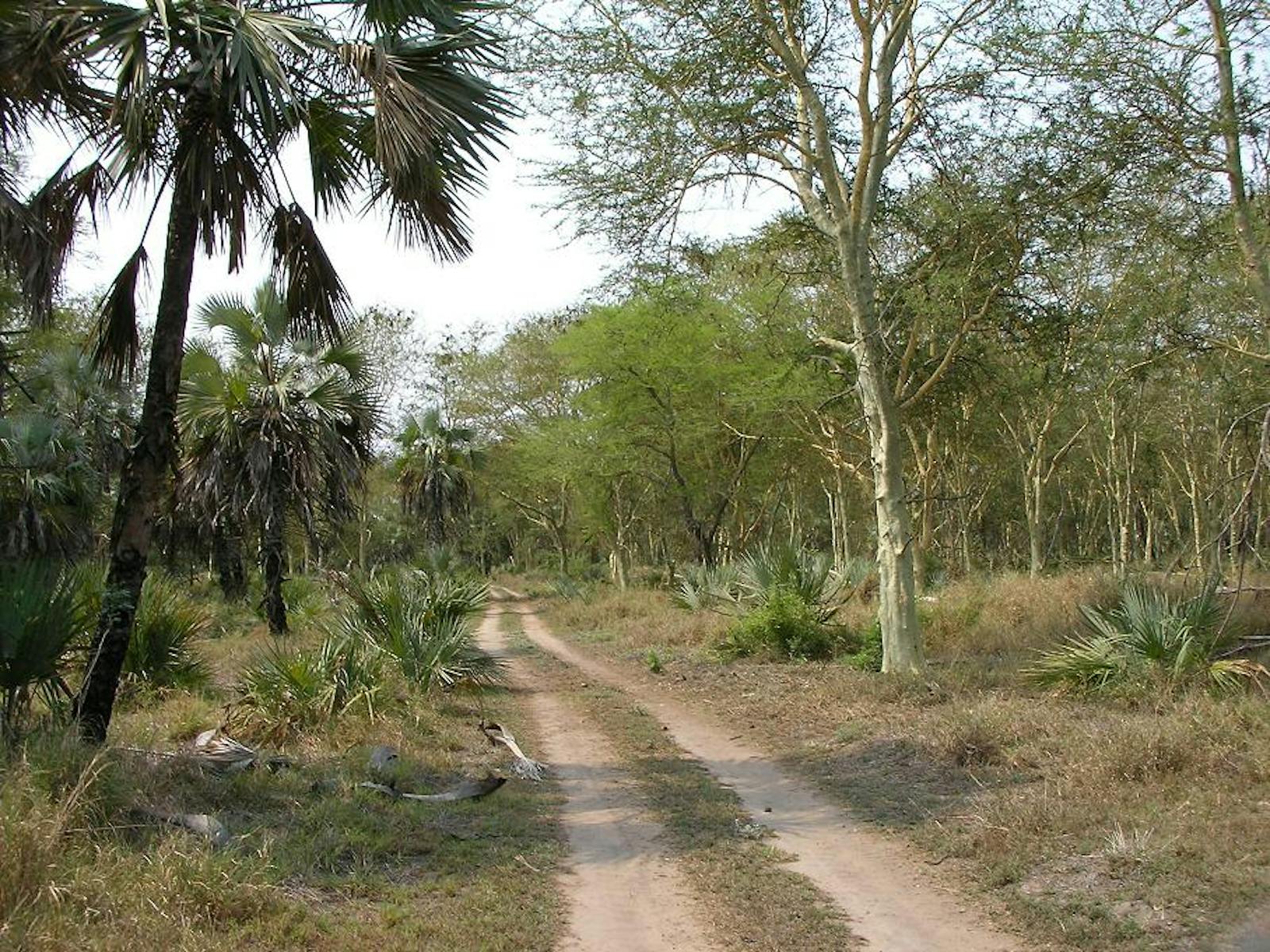Zambezian-Limpopo Mixed Woodlands
The ecoregion’s land area is provided in units of 1,000 hectares. The protection goal is the Global Safety Net (GSN1) area for the given ecoregion. The protection level indicates the percentage of the GSN goal that is currently protected on a scale of 0-10.
Bioregion: Greater African Subequatorial Savannas & Mixed Woodlands (AT11)
Realm: Afrotropics
Ecoregion Size (1000 ha):
18,342
Ecoregion ID:
66
Conservation Target:
21%
Protection Level:
9
States: Botswana, Malawi, Zambia, Mozambique, Zimbabwe
Elephant browsing activity and fire are the two major natural factors shaping the vegetation and associated fauna in the Zambezian-Limpopo Mixed Woodlands ecoregion. Elephants crop the larger trees in savannas and woodlands, creating openings exploited by grasses, thus increasing fire frequency and intensity.

The flagship species of the Zambezian-Limpopo Mixed Woodlands ecoregion is the Sharpe's Grysbok (Raphicerus sharpei). Image credit: Burnard Dupont, Creative Commons
This interplay between fire and elephants normally results in an open, two-tiered savanna consisting of large trees interspersed with shrubs at varying stages of growth. The steep population declines in elephants and other browsing herbivores due to uncontrolled hunting and ivory poaching during the Mozambique civil war in the 1970s resulted in 35 years of woodland expansion in Gorongosa National Park.
The Zambezian-Limpopo mixed woodlands are widespread in the lower-lying areas of eastern southern Africa. Patches of the ecoregion habitat are scattered throughout southern Malawi, surrounding the Zambezian flooded grasslands in Zambia and southern Zimbabwe and stretching through the middle of southern Mozambique.

Hippo. Image credit: Terry Feuerborn, Creative Commons
The ecoregion falls largely within the tropical summer-rainfall zone, with precipitation largely confined to the period of November to April. Annual average rainfall generally varies between 450 mm to 710 mm, and mean annual temperature varies from 18° to 24° C. The terrain is generally flat or gently undulating along the floors of the major river valleys, with average elevations ranging from 200 m to 600 m. Soil conditions may vary, but mopane soils generally possess an impervious zone of accumulation. Vegetation grows on fertile, well-drained, and slightly basic soils at elevations intermediate to the river valleys and uplands.
The ecoregion falls within the Zambezian regional center of endemism. This ecoregion is one of the most important areas for large mammal diversity and biomass in southern Africa. There is a wide range of large herbivores, including African elephant, hippopotamus, African buffalo, giraffe, Burchell’s zebra, waterbuck, roan antelope, sable antelope, and blue wildebeest as well as a variety of large carnivores, including the African lion, leopard, and spotted hyena.
There were 11,120 elephants in Gonarezhou National Park and 777 in Liwonde National Park in 2014. Sharpe’s grysbok, a small, shy, solitary antelope, is also common in this ecoregion. Although the ecoregion is rich in vertebrate species, it has few strict endemics.

Giraffes. Image credit: Justin Raycraft, Creative Commons
Near-endemic birds include Lilian's lovebird, black-cheeked lovebird, and Chaplin's barbet. The ecoregion contains a number of near-endemic reptiles, such as the two-toed burrowing skink, bluetail scrub lizard, and Sabi quill-snouted snake.
The majority of Zambezian-Limpopo woodlands occur in areas of low human population density, and much of the habitat is, therefore, in good condition. Protected areas in this ecoregion include Gonarezhou and Matopos National Park in Zimbabwe; Liwonde National Park and Majete Wildlife Reserve in Malawi; Goronogosa National Park, Elephant Marsh Ramsar site, and a number of hunting reserves in Mozambique; Bilili Springs and Mamwala game management areas, and the end of Kafue National Park in Zambia. South Africa, Zimbabwe, and Mozambique declared the Greater Limpopo Transfrontier Park (87,000 km2). The park includes Kruger, Gonarezhou, and Limpopo National Parks and land in Zimbabwe, connecting Kruger and Gonarezhou.
A major threat to the ecoregion is poaching and the exploitation of wildlife. Illegal hunting provides bushmeat for commercial trade as a source of income, food for domestic consumption, or medicinal purposes; wildlife is also killed as retaliation to human-wildlife conflict. The most common animals hunted include impala, kudu, Burchell’s Zebra, and African buffalo. The poaching of spotted hyenas, leopards, and lions also occurs. Other threats in this ecoregion include habitat loss from slash-and-burn farming for cash crops and livestock production.
Priority conservation actions for the next decade
- Increase alternative economic income opportunities to prevent illegal hunting.
- Encourage key stakeholders to enhance law enforcement against illegal hunting.
- Increase awareness and education on the dangers of using herbicides and pesticides as a means of killing wildlife.
-
-
1. Burgess, N., Hales, J.A., Underwood, E., Dinerstein, E., Olson, D., Itoua, I., Schipper, J., Ricketts, T. and Newman, K. 2004. Terrestrial ecoregions of Africa and Madagascar: a conservation assessment. Island Press.
2. Chase, M.J., Schlossberg, S., Griffin, C.R., Bouché, P.J., Djene, S.W., Elkan, P.W., Ferreira, S., Grossman, F., Kohi, E.M., Landen, K. and Omondi, P. 2016. Continent-wide survey reveals massive decline in African savannah elephants. PeerJ. 4.
3. Gandiwa, E. 2011. Preliminary assessment of illegal hunting by communities adjacent to the northern Gonarezhou National Park, Zimbabwe. Tropical Conservation Science. 4(4), pp.445-467.
4. Daskin, J.H., Stalmans, M. and Pringle, R.M. 2016. Ecological legacies of civil war: 35‐year increase in savanna tree cover following wholesale large‐mammal declines. Journal of Ecology. 104(1), pp.79-89. -
Cite this page: Zambezian-Limpopo Mixed Woodlands. Ecoregion Snapshots: Descriptive Abstracts of the Terrestrial Ecoregions of the World, 2021. Developed by One Earth and RESOLVE. https://www.oneearth.org/ecoregions/zambezian-limpopo-mixed-woodlands/
-




